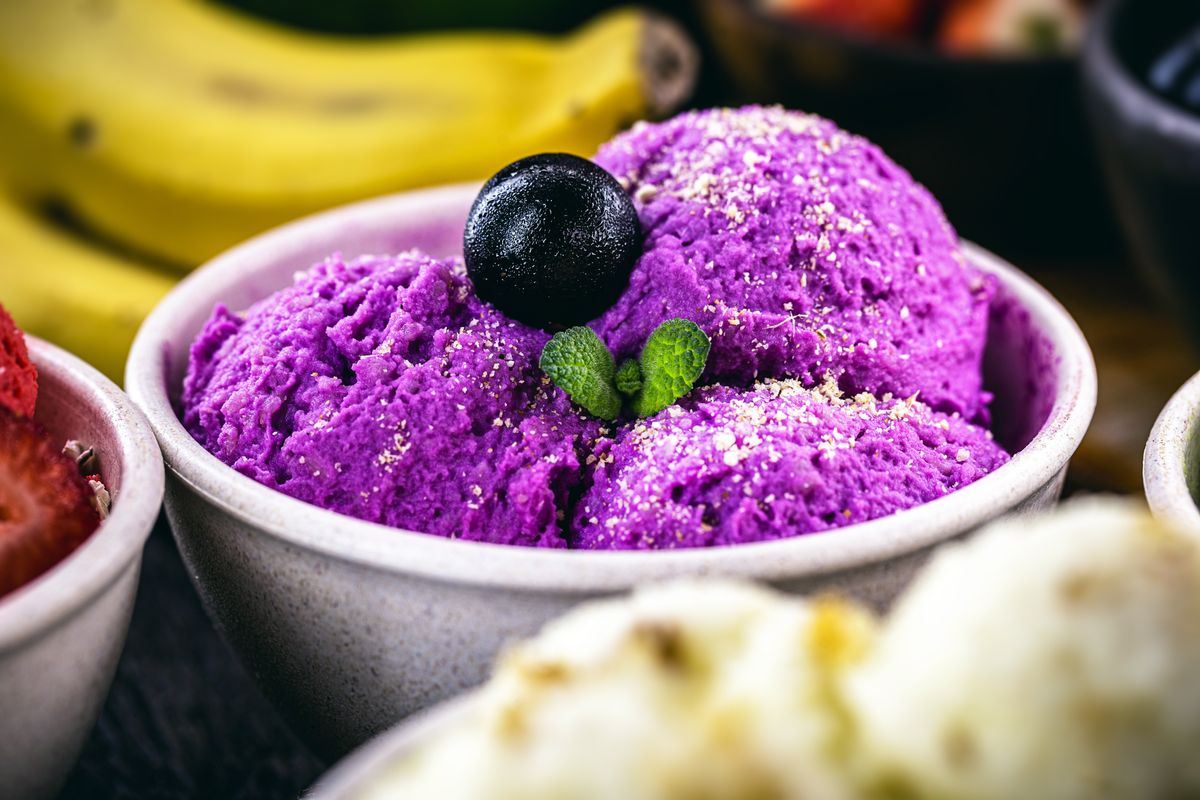Unveiling the Truth about Dairy-Free Ice Creams: Debunking Health Claims and Examining Ingredient Quality
In recent years, the surge in popularity of non-dairy alternatives has led to a significant rise in the demand for dairy-free ice creams. While some individuals turn to these frozen delights out of necessity, such as those with lactose intolerance or lifetime vegans, many others perceive them as a healthier option, assuming they are made with superior ingredients. However, the reality is that not all dairy-free ice creams are necessarily better for you than their dairy counterparts.
According to Mary Sabat, an experienced nutrition expert, the belief that non-dairy products are inherently healthier can be attributed to the growing popularity of plant-based diets and associated health claims. Many people assume that plant-based alternatives are healthier because they are perceived as more natural or less processed. Moreover, negative publicity surrounding certain aspects of dairy, such as lactose intolerance, hormone usage, and animal welfare concerns, also contributes to the notion that non-dairy products are superior. However, Sabat warns that this assumption is not always accurate, particularly when it comes to ice cream.
Sabat emphasizes that dairy products offer nutritional advantages over oat-, nut-, or soy-based alternatives in several ways:
Protein Content: Dairy products, especially milk and yogurt, are excellent sources of high-quality protein, essential for muscle growth, repair, and overall health. While non-dairy alternatives may contain some protein, it is often lower in quantity and quality compared to dairy.
Calcium & Vitamin D: Dairy products are rich in calcium, a mineral vital for bone health, and vitamin D, which aids calcium absorption. These nutrients occur naturally in dairy but may be lower or absent in non-dairy alternatives unless they are specifically fortified.
Vitamin B12: Dairy products are one of the few dietary sources of vitamin B12, crucial for nerve function and red blood cell production. Plant-based alternatives generally lack this important nutrient unless fortified.
To help consumers navigate the frozen food section and avoid dairy-free ice creams made with low-quality ingredients, Sabat provides expert insights. She suggests being cautious of the following ingredients when choosing a quality non-dairy ice cream:
Added Sugars: Excessive added sugars can contribute to weight gain, dental issues, and an increased risk of chronic diseases like diabetes. Consumers are advised to check the nutrition label for sugar content and opt for products with lower amounts or those sweetened with natural alternatives like stevia or monk fruit.
Artificial Sweeteners: Harmful sweeteners like erythritol, Splenda (sucralose), or NutraSweet (aspartame) are found in many popular ice cream and non-dairy ice cream products. Sabat recommends looking for products sweetened with stevia or monk fruit instead.
Trans Fats: Trans fats are unhealthy fats that raise bad cholesterol (LDL) levels and increase the risk of heart disease. It is crucial to avoid products containing partially hydrogenated oils, which are a source of trans fats.
Artificial Additives: Some non-dairy ice creams may contain artificial flavors, colors, and preservatives, which can have negative health effects for certain individuals, such as allergic reactions or hyperactivity in children. Opting for products with simpler ingredient lists, focusing on natural flavors and minimal additives, is recommended.
When selecting dairy-free ice cream, Sabat advises consumers to look for a short and recognizable ingredient list, preferably with plant-based alternatives like oats, nuts, or soy as the main components rather than fillers or additives. Checking the nutritional content is also crucial, paying attention to protein, calcium, and vitamin D levels. It is essential to choose options with comparable or higher amounts of these nutrients compared to dairy ice cream. Additionally, considering fortifieddairy-free ice cream products that replace the nutrients found in dairy is worth exploring.
While dairy-free ice cream can be a delightful alternative for those with lactose intolerance, following a plant-based diet, or having other dietary restrictions, it is essential to make informed choices based on both ingredients and nutritional value to ensure a high-quality product that aligns with personal health goals.
To help you save time and simplify your grocery shopping experience, we have identified a selection of dairy-free ice creams with low-quality ingredients that you should avoid. Continue reading to discover which dairy-free ice creams to skip on your next trip to the store.
Indulgence or Regret? Examining the Ingredients and Nutritional Value of Popular Dairy-Free Ice Creams
Ben & Jerry's Non-Dairy Oatmeal Dream Pie
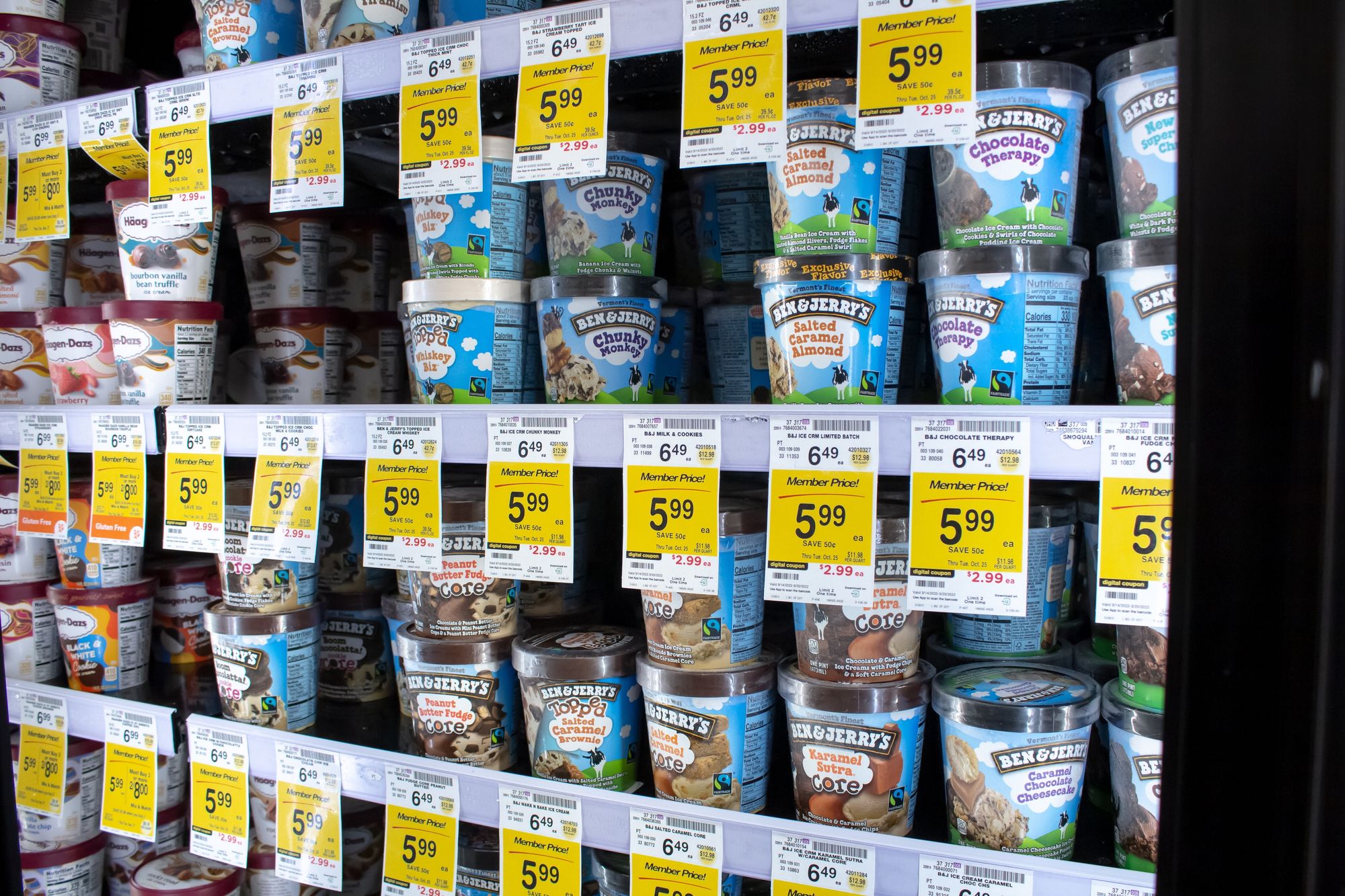
Take a moment before you dig into Ben & Jerry's Non-Dairy Oatmeal Dream Pie™. While the name may sound tempting, it's worth considering the ingredients and calorie count. Each serving packs 300 calories, 12 grams of fat (7 grams saturated fat), 80 milligrams of sodium, 48 grams of carbohydrates (including 29 grams of sugar), and only 2 grams of protein. Notably, it contains cornstarch, which lacks essential nutrients and has been associated with significant spikes in blood sugar. Additionally, corn syrup is among the ingredients, which can make it challenging to maintain healthy blood sugar levels.
Ben & Jerry's Non-Dairy Chocolate Fudge Brownie

Indulging in Ben & Jerry's Non-Dairy Chocolate Fudge Brownie may not be as guilt-free as you think. With 350 calories per serving, 18 grams of fat (including 11 grams of saturated fat and 0.5 grams of trans fat), 115 milligrams of sodium, 43 grams of carbohydrates (including 37 grams of sugar), and 6 grams of protein, it's important to note that both the dairy-free and regular versions of this ice cream flavor are essentially identical from a nutritional perspective. However, the non-dairy option contains ingredients like corn syrup, corn starch, soybean and coconut oil, and added sugars. Furthermore, it even contains a small amount of trans fats, historically linked to an increased risk of heart disease. Unless you strictly follow a plant-based diet or have lactose intolerance, you may be better off opting for the regular version or exploring different flavors altogether.
Brave Robot x Coolhaus Chocolate Chip Cookie Dough Sammies
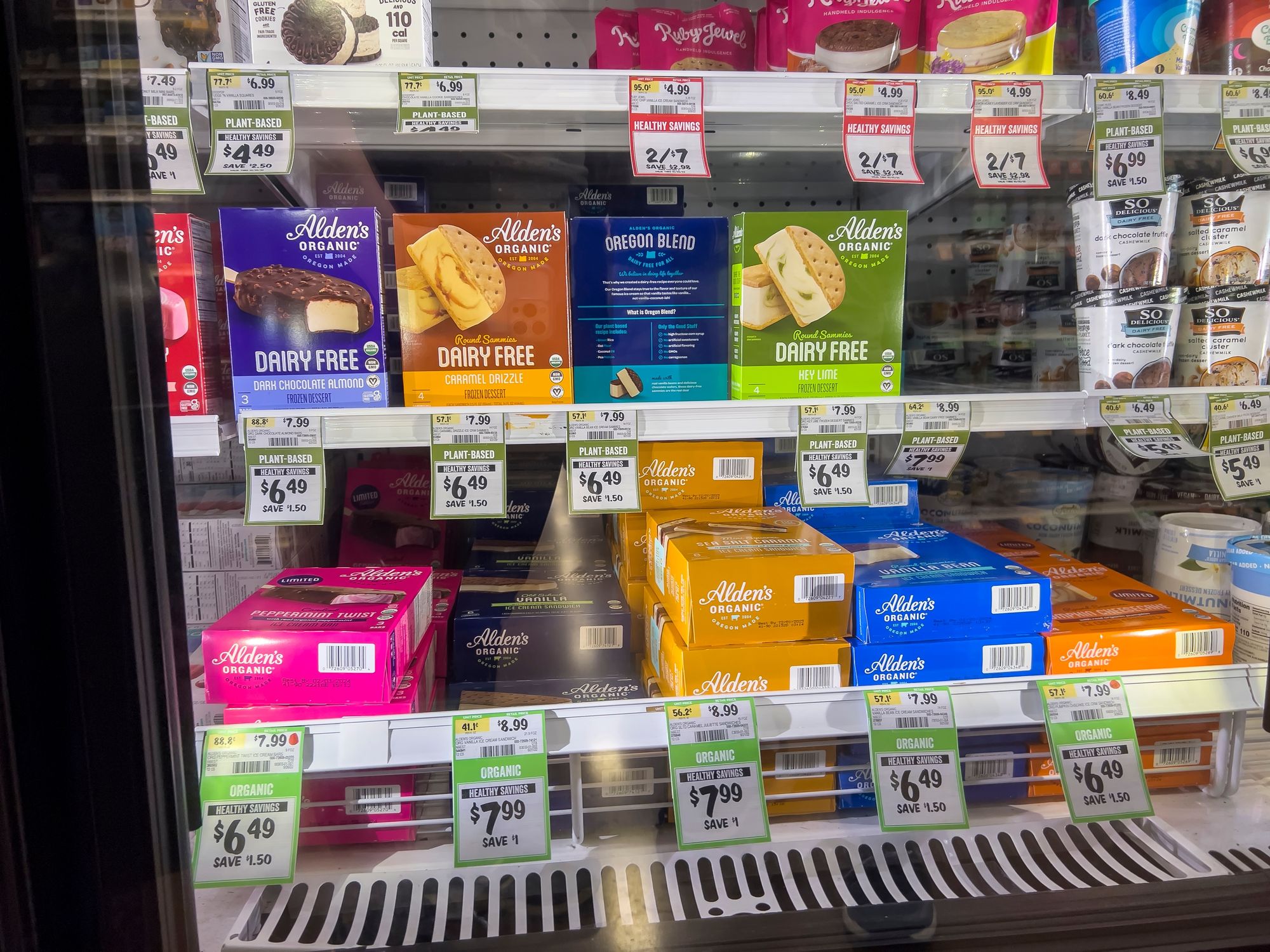
Before you reach for Brave Robot x Coolhaus Chocolate Chip Cookie Dough Sammies, consider the nutritional information. Each sandwich amounts to 290 calories, 14 grams of fat (including 7 grams of saturated fat and 0 grams of trans fat), 160 milligrams of sodium, 37 grams of carbohydrates (including less than 1 gram of fiber and 24 grams of sugar), and 3 grams of protein. While they may seem like a satisfying treat, the low fiber content and modest protein levels may leave you wanting more, leading you to reach for a second sandwich.
Brave Robot Hazelnut Chocolate Chunk
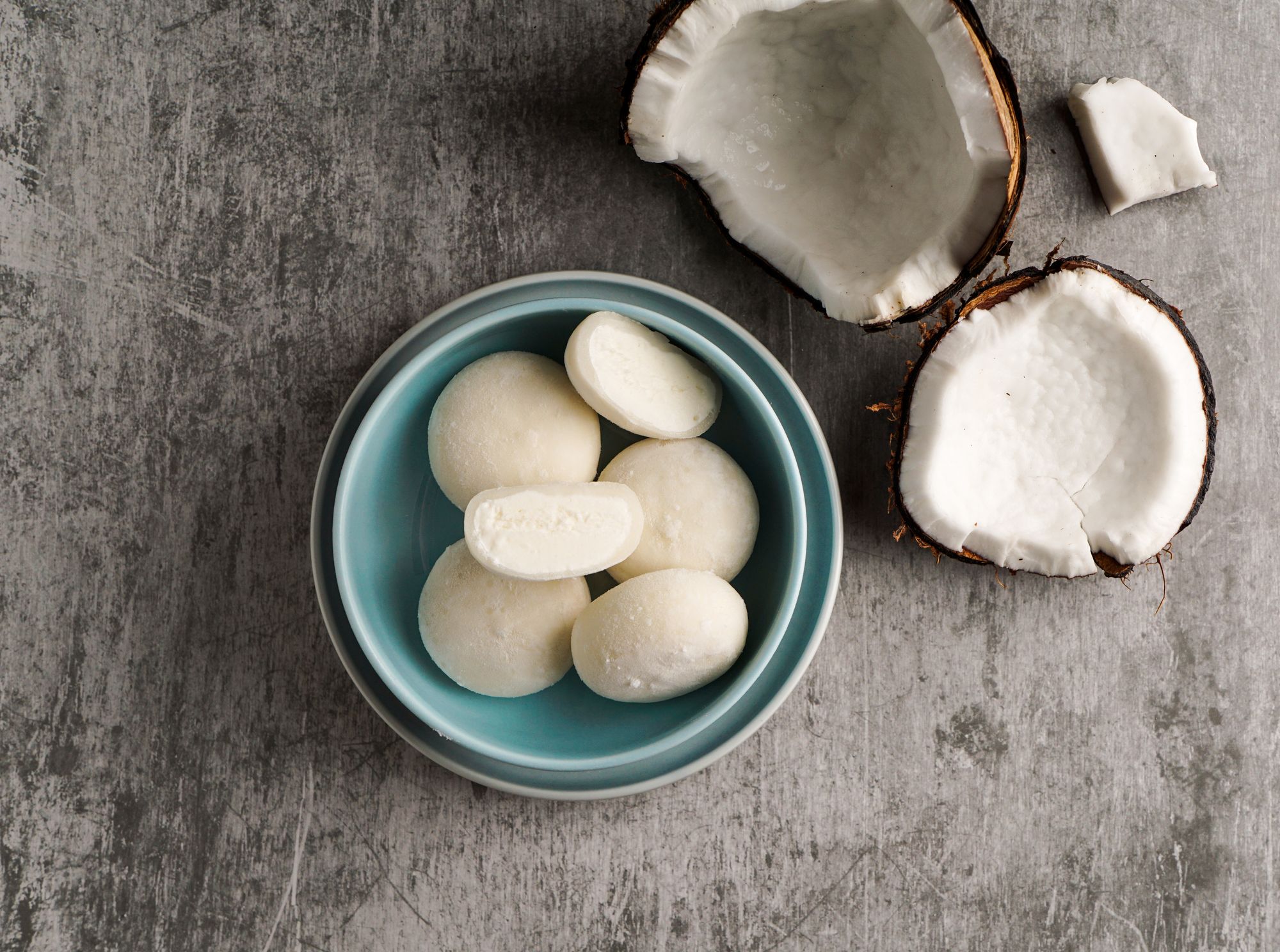
Brave Robot Hazelnut Chocolate Chunk may sound appealing, but think twice before indulging. Per serving, it contains a hefty 390 calories, 26 grams of fat (including 14 grams of saturated fat), 125 milligrams of sodium, 33 grams of carbohydrates (including 2 grams of fiber and 28 grams of sugar), and 5 grams of protein. Additionally, this dairy-free ice cream includes coconut oil, which, while fine in moderation, is high in saturated fats. Consuming one small serving provides 70% of the recommended daily limit of saturated fat, and if you finish the entire pint, you'll have reached a staggering 185%!
Planet Oat Chocolate Chip Cookie Dough Non-Dairy Frozen Dessert
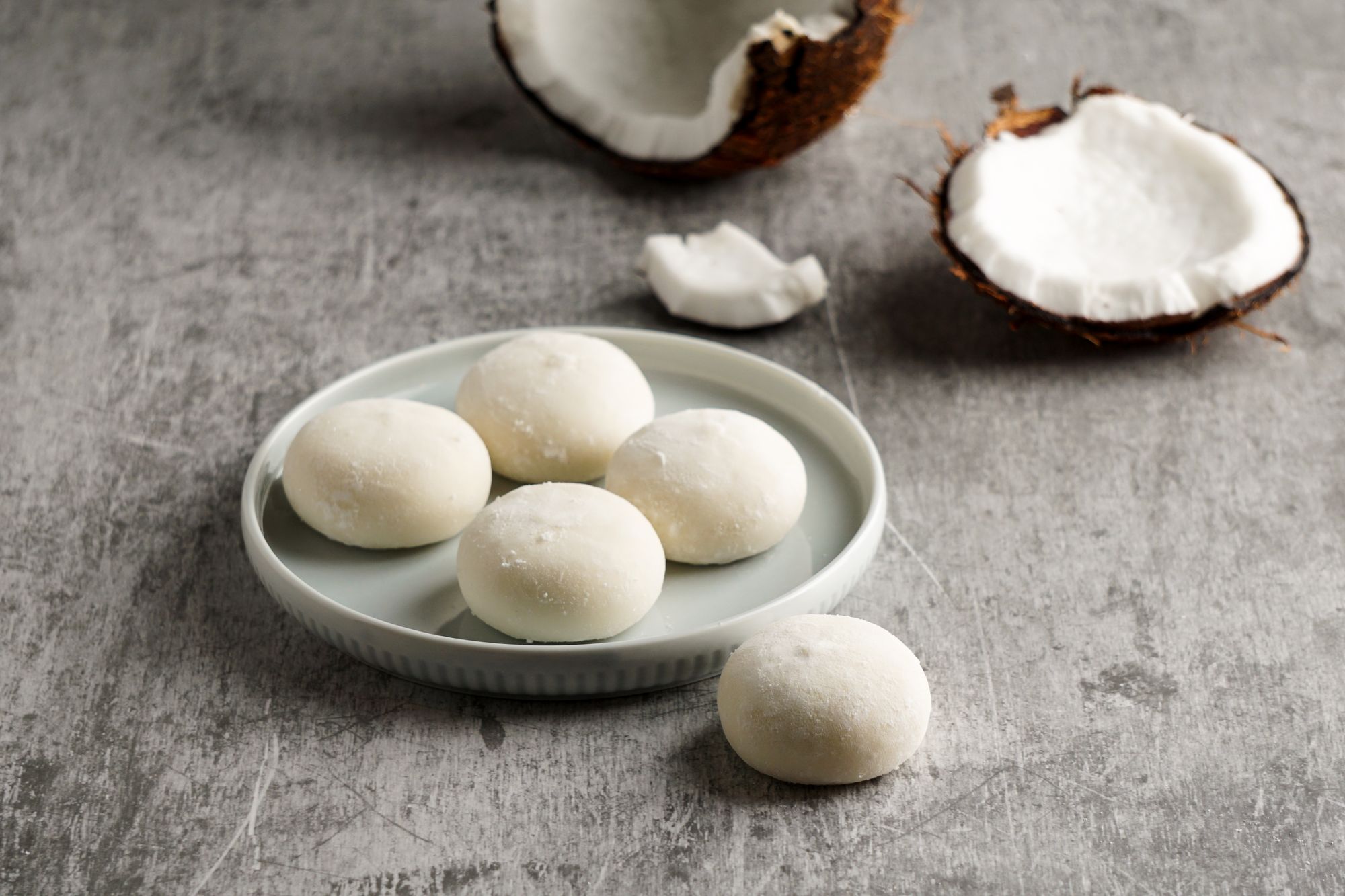
Don't be deceived by the name—Planet Oat Chocolate Chip Cookie Dough Non-Dairy Frozen Dessert may not be the healthiest choice. Each serving contains 280 calories, 14 grams of fat (including 10 grams of saturated fat and 0 grams of trans fat), 65 milligrams of sodium, 39 grams of carbohydrates (including 2 grams of fiber and 21 grams of sugar), and 2 grams of protein. With ingredients like palm oil, soybean oil, coconutoil, corn starch, powdered cane sugar, and molasses, you might find it more satisfying to opt for a pint of dairy-enriched cookie dough ice cream instead.
Before treating yourself to these popular dairy-free ice creams, take a moment to consider their ingredients and nutritional profiles. Being aware of the per-serving information can help you make informed decisions about which indulgences align with your health goals.

